At the beginning of 2019, we asked authors to submit answers to a few questions in the hopes of giving our readers some insight into the various methods writers use to produce their mystery fiction. This month, we have a terrific bunch of authors and their very helpful responses. Here are the next four.
Let’s first welcome PAUL D. MARKS to the column.
BIO: Paul D. Marks is the author of the Shamus Award-Winning mystery-thriller White Heat. Publishers Weekly calls White Heat a “taut crime yarn.” Betty Webb of Mystery Scene Magazine calls its sequel Broken Windows “Extraordinary”. His short story Ghosts of Bunker Hill was voted #1 in the 2016 Ellery Queen Mystery Magazine Readers Poll. Windward was selected for the Best American Mystery Stories of 2018, and won the 2018 Macavity Award for Best Short Story. His stories have also been published in Mysterical-E, Beat to a Pulp, Alfred Hitchcock Mystery Magazine, Hardboiled and more. www.PaulDMarks.com
You have a new idea for a mystery that you want to develop into a book or short story.
What are your first steps in developing the idea to transform it into a novel-length piece? What’s the first thing you do after jotting down the initial idea?
Somewhere, and it can literally be from anywhere, an idea pops into my head. If it sticks it might be something I actually decide to put to “paper” – or screen, as the case might be these days.
I’m a pantster as opposed to an outliner, so my first steps, after coming up with the initial idea are to write down a couple of the major points or characters. Some ideas seem like novels when you start but then you find that there’s really not enough there to justify novel-length without padding, so maybe they end up as a short story or novella.
The initial idea can morph through a lot of drafts. My first steps in the actual writing of the story or novel are often, though not always, to write the first draft or two in screenwriting/script format. Screenplay format allows me to do it fast and not worry about description. It’s basically INT. or EXT. whatever the location is, and dialogue, with the barest amount of “screen direction”. That way I can get to know my characters and let them just talk and walk.
I spend most of the time editing and refining. Sometimes the finished product is drastically different from the initial draft.
What additional things do you do to shape that idea so it becomes the mystery you thought it could be?
The key for me is to refine and refine, hone and hone. Chisel away at it like one would a piece of stone sculpture until you have something that starts to resemble what you want it to be. Especially since I don’t outline much more than a few notes, my early drafts can be all over the place. But they do allow me to see where things are going, get to know the characters, the conflicts, etc.
I also research. And that research sometimes leads me to discovering things that can add a lot of detail and richness to the story. One of the things I like to do is study maps, especially when something is set in the past. I wrote a mystery-thriller set in Los Angeles during World War II and looking at maps of that era was fascinating. Many of the freeways that we know today didn’t exist and that made a difference in how my character got around and where they went and what they did. In a small way it helped shape some of the story. So little things can have big effects. (That novel, The Blues Don’t Care, isn’t out yet, but should be in 2020, I believe.)
Do you use Character Charts, plot outlines, pictures, notebooks, bulletin boards, etc.?
Which methods have you tried and which have worked best for you?
When I started out, I did all of that. I did the thing with index cards for each scene and character. I printed up forms that I could fill in with character traits, other forms for room/scene/setting descriptions. And yup, bulletin boards. But these days these things are mostly in my head or files on my computer – I’m not saying this is the most efficient method but it works for me…mostly.
I have an idea as to who the characters are, what their backgrounds and motivations are. But again, these days I mostly keep that in my head. It can cause problems and sometimes I have to go back and see something like, did I make Joe’s hair blue or green, but on a computer that’s not much hassle.
I also keep an idea file on the computer. I jot down ideas from time to time and will go back and look at them when I’m looking for an idea for a story or novel. Sometimes the idea will just be a line that I thought would make a good title. Sometimes it’s a song lyric that inspires an idea. I also try to keep a bible of sorts but I’m not good at that. I often make an “outtakes” file and put anything I delete from the original draft in that just in case I want to incorporate it into another scene or story.
Depending on the method you use, how successful has it been in fleshing out the idea? Or, do you begin with one method and find yourself gravitating to another?
I will admit that my method works well in early drafts. I can write them very quick and dirty. And I can be very flexible in where they go. The problem, if it is one, comes in later drafts where I have to take this unwieldy mess and pare it down to something that works in all regards, plot, character, subplots, tension, conflict, etc. Maybe if I outlined I would end up doing less drafts and maybe ultimately get more done. But I don’t think in terms of an outline. It seems too structured for me, so I just let things run wild and hope for the best.
Do you find that the original idea changes as you work with it?
Does the idea ever become something entirely different than when you started?
Yes. And yes. Ideas change over time and as I start working on them. And sometimes they become something completely different. Nothing is set in stone. As I said, I often write the first draft/s in script format. And I just let the characters walk and talk and they take me places I might not have thought of initially, so things definitely change. Plot points come and go, as do characters. Sometimes a minor character becomes a major one and vice versa. And sometimes the person I thought was the badguy turns out not to be. Sometimes a character seems extraneous so s/he either gets cut or combined with another character. Things like that. As I’ve also mentioned, it’s all a matter of honing and fine tuning.
Sometimes I’ll start by looking at my ideas file and I’ll find two or three ideas that I like. I’ll start developing one idea and then realize that one of the other ideas can be woven in. For example, my story “Nature of the Beast,” published at Beat to a Pulp, started out as a story about a hitman who enjoyed his job, but I had another idea about a person whose life goes on the skids. So I ended up merging the two into a story about a hitman who enjoys his job until he gets a gig to kill someone he knows – then his life hits the skids.
And I once set out to write a story that was about Dee Dee Ramone, of the Ramones, but it turned into a satirical murder mystery called Continental Tilt, published in the Murder in La-La Land anthology, with barely a mention of Dee Dee. Though part of it is set in a cemetery in Hollywood where he’s buried and where people gather to watch movies on a mausoleum wall, with wine and brie, while sitting on dead people’s graves – for real.
My story The Practical Girl’s Guide to Murder (Mysterical-E Spring 2018) started out as a serious story about a defense attorney who, in the course of trying to get his own client acquitted of murder charges, falsely accuses another woman of the crime. But it quickly became a satire of television “murder shows” – you know those shows like Wives with Knives and Evil Lives Here – on the Discovery ID Channel. There was a show that told the crime stories in reverse, so I told my story in reverse and then had fun as my main character used all the techniques she learned on these shows to commit the perfect murder.
Does the method you use allow flexibility in development? How?
Yes, nothing is permanent and shouldn’t be. Kill your darlings, as they say. When you’re a pantster it’s easy to change direction in the middle of the road and I think it actually makes the story more exciting when you don’t know exactly where you’ll end up.
I had a writing partner (for screenplays) and sometimes we’d disagree on certain things in a script. And she’d say something like, “Now Paul, this is really good. And I really like it. And we’ll use it,” in a very high, sing-songy voice. Then, she’d continue, “And we’ll use it…just not in this script,” in a lower, more formidable voice.
So, don’t fall in love with what you’ve done. Nobody but you knows it was there in the first place so nobody but you will miss it. And you can use it in something else, he said in a deep, formidable voice.
Choose a novel of yours and walk us through its development from idea to finished work. Please tell us about the methods used and how the idea changed, if it did.
I’m not very methodical, I guess, so I just sort of wing it. When I wrote Broken Windows, the sequel to White Heat, I wasn’t sure where it was going or what it would be about. I had just finished White Heat, which is about a private detective who, while working on a case, ends up in South Central Los Angeles right when the Rodney King riots break out. I wasn’t sure I wanted to write a sequel but the agent I was with at the time thought it would be a good idea to write one while she was trying to place White Heat, which is definitely good motivation. So, I somewhat reluctantly started to write it.
So for Broken Windows the question was, how do you top an exciting and controversial event like the Rodney King riots, using a topical event to spur my mystery-thriller? I thought about what was happening at that time in L.A. and California. And the Proposition 187 protests seemed like the logical jumping off point. Prop 187 was a notorious anti-illegal alien proposition – sort of a precursor to all the societal turmoil we’re going through today – so I thought I’d wrap a mystery around that.
At the same time I’ve always been drawn to stories about people coming to Los Angeles and losing their hopes and dreams along the way. That led to the opening scene of a young women climbing to the top of the Hollywood sign…and jumping to her death.
I often draw inspiration from real life events, like Prop 187, and the sign scene was based on Peg Entwistle, a young actress who jumped from the Hollywood sign in 1932.
I also had an idea for a story about someone placing an ad in the paper saying “Will do anything for money” and what kind of story might evolve from that.
So now I had three ideas — Prop 187 and the immigration issue, lost Hollywood dreams, and a desperate want ad – and I decided to put them all together in one novel. All I had to do then was figure out how to bring in my P.I. character, Duke, and make it all work in one story – a story that became Broken Windows.
I started with the Hollywood sign scene and kept going from there. Since I’m a pantster, I just let the characters run with it, walking and talking. And that’s when ideas start forming. How does P.I. Duke end up getting involved with the issue of illegal immigration – maybe an undocumented worked is killed? But how does Duke (now a famous P.I. working for big Hollywood producers) end up with this type of case? That’s where Marisol, a housekeeper down the block from him, comes in. Just take a walk around West L.A. and you’ll see maids and housekeepers walking dogs that busy Westsiders don’t have time to walk.
Well now Duke needed a dog. And I had a real-life situation that fit right into that scenario. We’d adopted a Rottweiler puppy from the pound and right after we brought her home she got very sick with kennel cough and other things. I spent weeks nursing her back to health and coupaging her in the shower. That ended up being the inspiration for Duke’s new dog Molly, who he also has to coupage.
And from there the story just evolved. I used screenplay format to start the rough draft as I usually do and let the movie play out in a stream-of-consciousness way. I always keep in mind the three-act structure and that sort of dictates where the story goes. In act one I introduce the characters and situations. Act two – up the stakes and put the characters in jeopardy. Act three – have everything come to a climax and resolution.
Then, it’s edit, hone, revise, chisel, chip, revise and repeat over and over again.
From the first draft to the finished draft it gets tighter, more conflict, making sure the elements are balanced, the three stories, the woman at the Hollywood sign, the desperate disbarred lawyer, and Duke’s search for the killer of Marisol’s brother. I just start with the kernel of an idea and develop it from there.
ADDITIONAL THOUGHTS:
I’ve probably said this over and over again, but the most important part of the process is just sitting down and typing the first word. And after that to just keep going. I don’t worry if the first line is perfect or not – I don’t worry if anything is perfect or even close to it. I just try to get everything out and onto the screen. It will all be revised and refined in the rewriting. The first draft is usually a huge mess, but the final draft will be shaped like a statue being carved out of a massive piece of marble.
Thank you for having me. It’s been a blast.
Next is V.S. Kemanis. Here is her bio:
Attorney, dancer, choreographer, mother, novelist—V.S. Kemanis has enjoyed an exciting and varied career in the law and the arts. She has worked for the Manhattan District Attorney, the NYS Organized Crime Task Force, and the Appellate Division of NYS Supreme Court, most recently as supervising editor of decisions. Her legal mysteries feature prosecutor Dana Hargrove who, like the author, juggles family life with a high-powered professional career in criminal law. Kemanis is also an accomplished dancer of ballet and contemporary techniques and has taught, choreographed, and performed in many venues. Kemanis writes literary and crime stories on wide-ranging themes, collected in four published volumes. Her crime stories have appeared in Ellery Queen’s Mystery Magazine and EQMM’s Crooked Road, Vol. 3, anthology. She is currently on the board of the New York Chapter of the Mystery Writers of America.
You have a new idea for a mystery that you want to develop into a book.
What are your first steps in developing the idea to transform it into a novel-length piece? What’s the first thing you do after jotting down the initial idea?
An idea for a full-length novel often develops slowly, over a period of months. For my legal mysteries, I draw from the pool of cases and personalities I encountered during my years working in the criminal justice system. I like to mix up these bits and pieces in interesting ways to embroil my characters in personal dilemmas and conflicts. When I feel I have a good plot, I mentally visualize my characters enacting the story. If the movie in my head looks intriguing, it’s time to go to work!
What additional things do you do to shape that idea so it becomes the mystery you thought it could be?
The next step is research. I like to confirm the legal theories, procedures, and criminal statutes I plan to use. I also research details that will add depth and realism to my characters. For example, one of the characters in my current WIP is a substance abuse counselor. To better understand her, I’m researching the type of training she needs and the techniques she might use during her group therapy sessions. I do the same kind of research for locations in my books, which are set in New York City and its suburbs. Although I’m quite familiar with these areas, I visit specific streets and buildings, or do a web-based photo search, to better visualize scenes in the book.
Do you use Character Charts, plot outlines, pictures, notebooks, bulletin boards, etc.?
Which methods have you tried and which have worked best for you?
I’ve used plot outlines and pictures, but not the others you mention. To visualize a character, I might scroll through images on the web until I find a face that fits the personality I want. After completing my research and fleshing out my characters with names, ages, traits, and appearance, I write a lengthy outline which, more accurately, could be called a chapter synopsis. I summarize each chapter in a paragraph or two.
Depending on the method you use, how successful has it been in fleshing out the idea? Or, do you begin with one method and find yourself gravitating to another?
I have used the same method for each of my four published novels and the fifth one, now in progress. It has served me well!
Do you find that the original idea changes as you work with it?
Does the idea ever become something entirely different than when you started?
The original idea never changes or becomes something entirely different. But this leads to your next question…
Does the method you use allow flexibility in development? How?
Yes! My method is very flexible. Although I never stray from the main idea, minor plot points often change as I write, reread, and edit the manuscript. Halfway into the book, I may find that the chapters will work better in a different order. I may discover inconsistencies or illogical developments in the plot. I may realize that a scene I originally outlined is not compatible with a particular character’s personality. And sometimes the characters lead me to entirely new scenes I hadn’t imagined at the outset. This is the most fun I have as a fiction writer: when the characters start leading me, instead of the other way around.
Choose a novel of yours and walk us through its development from idea to finished work. Please tell us about the methods used and how the idea changed, if it did.
The idea for my first novel in the Dana Hargrove series, Thursday’s List, came directly from my work at the NYS Organized Crime Task Force in the nineties. We investigated the money laundering network of the Cali Cartel and forfeited large amounts of narcotics proceeds funneled into financial institutions and companies. I used my knowledge of Colombia and the money laundering scheme as a basis for the novel but placed it all in a fictional context. To add mystery and suspense, I made Dana a rookie prosecutor who isn’t quite sure how to read clues suggesting a connection between the scheme and her good friends. To add societal depth, I wanted to depict the ways in which law-abiding Colombians can’t escape the reach of the narcotics cartels, which infected society and the economy on many levels.
With this initial idea, I used the plotting method described above. Little did I know at the time that the first novel would become a series featuring Dana Hargrove, at different stages of her legal career and family life. Since Thursday’s List was my first novel, I wrote and rewrote and rewrote again! Many details changed. The process now works for me in a more streamlined fashion—but it ain’t easy!
Our third author is Andrew Welsh-Huggins
BIO: By day I’m an editor and reporter at The Associated Press, focusing on criminal justice topics. By earlier in the day I’m the author of six mystery novels about an ex-Ohio State and Cleveland Browns quarterback turned private investigator, including Fatal Judgment, coming in April. With Akashic Books, I’m the editor of the upcoming Columbus Noir. My nonfiction books are No Winners Here Tonight, the definitive history of the death penalty in Ohio, and Hatred At Home, about one of the country’s first post-9/11 domestic terrorism investigations. My short mystery fiction has appeared in Kings River Life, Down And Out Magazine, Tough, and Mystery Weekly. My story, “The Murderous Type,” won the 2017 Al Blanchard prize for best short New England crime fiction, and appeared in the anthology Snowbound.
You have a new idea for a mystery that you want to develop into a book.
What are your first steps in developing the idea to transform it into a novel-length piece? What’s the first thing you do after jotting down the initial idea?
Since I write a continuing series, I first create a computer desktop folder with the book’s working title. Inside that folder go two documents: the work in progress; and a notes document (more on that below).
What additional things do you do to shape that idea so it becomes the mystery you thought it could be?
I don’t outline in traditional fashion, so a lot of my WIP development happens in my head: on walks, runs, drives or just doing the dishes. I’ve usually been thinking about a book for a few weeks before I start work in earnest. I also read up on topics that come into play in my books—fracking, politics, and human trafficking, among others over the years—and look for experts I can interview or email with questions.
Do you use Character Charts, plot outlines, pictures, notebooks, bulletin boards, etc.?
Which methods have you tried and which have worked best for you?
I’ve dubbed the method that works best for me “sidelining.” When writing, I always have open a document separate from my WIP, titled “Mile Markers.” I believe strongly in an initial rocket draft, writing straight ahead with no looking back (though I do re-read the previous day’s work before beginning anew). As I write, I note any ideas that come to me in the “Mile Markers” file. Those could include minor adjustments I need to make, such as changing a timeframe from a Saturday to Sunday; medium adjustments, such as adding or subtracting from a description or setting; and major developments such as changing the name and gender of a character, and making her or him good instead of bad, or vice versa—all of which I’ve done over the years. Before I begin a new draft, I consult that list and make the changes as I go. Of course, a new draft usually means a new, but hopefully shorter list of editing to-do items.
Depending on the method you use, how successful has it been in fleshing out the idea? Or, do you begin with one method and find yourself gravitating to another?
I’ve tried several methods over the years, from extensive outlining ahead of time, to deep character development before writing a word, to long advance synopses. For me, beginning with a general idea in my head of what’s going to happen, and using my “Mile Markers” document to track mid-work ideas and changes, is far away the best system.
Do you find that the original idea changes as you work with it?
Does the idea ever become something entirely different than when you started?
My plots change often, sometimes drastically, usually between the first draft—which takes about four months—and the second draft.
Does the method you use allow flexibility in development? How?
I’m a “pantser”—a person who writes by the seat of his pants, rather than following a strict outline—so flexibility is engrained in my method. The beauty of my “sidelining” approach is, for me, it allows me to systematically keep track of changes to plot, characters and place without losing steam during the writing process.
Choose a novel of yours and walk us through its development from idea to finished work. Please tell us about the methods used and how the idea changed, if it did.
My character—Andy Hayes—is an ex-Ohio State and ex-Cleveland Browns quarterback turned private eye with a history of romantic troubles and a habit of barging in first and asking questions later. I knew that my new novel, Fatal Judgment, would revisit a relationship he had with a judge spelled out in the first book in the series, Fourth Down And Out. I also knew it would involve her disappearance and his quest to find her and rescue her from some kind of trouble. Beyond that, though, details were lacking. Over the course of the eight drafts that I wrote before submitting it, I introduced the idea of a lawsuit trying to stop the development of a local swamp that ended up in the judge’s courtroom; then in later drafts a second swamp in a different part of Ohio that was somehow related to the former; then conceived the idea of a rare, fictional migratory bird—the Coastal Tanager—connected to the case; and then came up with a second missing person whose fate may tie everything together. Something was still lacking, however—motivation for the judge to keep certain secrets. It wasn’t until fairly late in the process (the fourth or fifth draft) that I added an episode from the judge’s law school days to explain her present-day actions. In the end, it all tied together. It just took a few drafts to get there.
Last, but definitely not least:
David Hagerty is the author of the Duncan Cochrane mystery series, which chronicles crime and dirty politics in Chicago during his childhood. The fourth book in the quartet, due for release in Spring 2019, derives from the false convictions of ten men on Illinois’ death row. Like all his books, David is inspired by efforts to right criminal injustice.
You have a new idea for a mystery that you want to develop into a book.
What are your first steps in developing the idea to transform it into a novel-length piece? What’s the first thing you do after jotting down the initial idea?
True events have inspired nearly all my fiction, including all four of my published novels, so where I typically begin is research. I start with the crime itself, reading old news clips and any recent summations. Lately I’ve become expert at the old microfiche machines that molder at the back of the library. Then I think about the time period in which it occurred. I want to know all the popular books, movies, and radio programs of the era. I learn the slang and the culture. I look for obscure details about fashion and technology in magazines or online. I study the controversies of the day since these make up the backdrop for many of my books. I examine the weather reports because even a blizzard can affect politics, as it did in Chicago during 1978’s mayoral election. Lastly, I read up about major events from that year (don’t want to ignore a war or a recession).
By the time that’s done, I usually have enough to create a rough outline.
What additional things do you do to shape that idea so it becomes the mystery you thought it could be?
I almost always visit the places I plan to write about, even if they’re familiar. I also spend a lot of time studying restaurants and menus, parks and street maps, buildings and other landmarks. I want my characters to exist in a specific and real geography, one familiar to natives but I hope with some surprises and bits of obscure local lore.
For example, in my fourth book I appropriated a bar called The Mirage that journalists used in a 1980s sting of crooked city inspectors. I love the resonance that such a history creates and the details it requires. I want Chicagoans and historians to nod knowingly at such mentions.
Do you use Character Charts, plot outlines, pictures, notebooks, bulletin boards, etc.?
Which methods have you tried and which have worked best for you?
For all my books, I used a spreadsheet listing locales, dates, plot points, clues, and characters. Not only does it help me keep track, it forces me to think more creatively in my settings and scene types (alternating ones emphasizing dialogue, action, investigation, etc.)
Depending on the method you use, how successful has it been in fleshing out the idea? Or, do you begin with one method and find yourself gravitating to another?
Some writers I know carry around a notebook to jot down observations and inspirations as they come. One used to scratch out ideas on beer mats and cocktail napkins. I imagined his novel taking shape as a kaleidoscope of drinking memorabilia. I don’t do either of those, but with the advent of cell phones, I’m forever sending myself emails with plot twists or character insights, anything to flesh out a story.
Truth is, the spreadsheet gives me the skeleton but not the lifeblood. To get at the heartbeat of the characters I use another method taught to me by a fellow writer: an outline of each person’s physical, sociological, and psychological makeup. Then I pull out key traits that I want to emphasize. For example, my hero’s wife is ambitious but frustrated by the sexism of the 1960s and 70s, which she believes is preventing her from holding political office herself. Instead, she pushes her husband to seek the power that she covets, a blend of Hillary Clinton and Lady MacBeth.
Do you find that the original idea changes as you work with it?
Does the idea ever become something entirely different than when you started?
If the story is any good, then the kernel of the idea must be present from the get-go. Ordinarily, I’ve got the crux of the tale within an hour, and from there it’s about filling in the details. For me, the inspiration dictates the story, and my job is to discover all its facets. If I try to manipulate things to my own ends, the tale becomes artificial or lifeless.
Does the method you use allow flexibility in development? How?
There’s still plenty of room for development.
For example, I never know the identity of the killer until the end of the first draft. Instead, I find that the solution will emerge organically. If it’s to make sense, it must be a character who’s close to the victim, has a clear motive, and who is easily identifiable to the reader. Nothing burns me more in a mystery than when the killer is unmasked, and I immediately ask “who?” If I look back, I don’t want to see the character hidden in a single paragraph. He/she should be an active and vibrant presence. The trick is to hide him/her in plain sight.
The problem with revisions is then I have to circle back to check for continuity: that the characters are in the right places at the right times, that the clues are present but not too obvious, and that people behave in plausible ways.
Choose a novel of yours and walk us through its development from idea to finished work. Please tell us about the methods used and how the idea changed, if it did.
The first time I heard the anecdote of Charles Percy, I knew I had to write about it. His story is the most infamous crime ever to happen in my hometown: a senatorial candidate’s daughter murdered six weeks before election day. Despite his loss, he hangs in and wins the race.
However, that tragedy provided only the opening chapters. The true story ended with no one being arrested, prosecuted, or convicted, though there were plenty of rumors. So I used the anecdote as inspiration and invented the rest.
I adjusted the time to 1978 (an era I remember well), switched the race to the governor’s office, and changed all of the details. The only elements I preserved were the crime itself and the setting, the northern suburbs of Chicago, where I grew up.
What most interested me about the tale, though, was its blend of crime and politics, which so often intertwine in real life. I love the cases that draw journalists like flies, where the pressure is on the police to find a suspect fast, and where the local pols try to capitalize on free publicity.
So I gave my hero a purpose for running: to catch his daughter’s killer. Over time, his motive evolves from justice to revenge. What better vehicle to punish the man who stole your happiness than to gain the power to punish him almost limitlessly.
My story also coincided with a wave of violence and terrorism in this country (airline highjacking were common in the 70s, as were insurrectionary leftist groups), and the development of three strikes policies targeting career criminals. Thus, my story became not just personal but societal.
One trick I hit on to heighten the suspense was to alternate between public and private plots. Thus, my even numbered chapters detailed Duncan’s run at office and the odds his efforts to solve the mystery.
The result was my first published novel, They Tell Me You Are Wicked, which kicks off the Duncan Cochrane mystery series. Three books are now in print, with the fourth due this Spring. To learn more and to read the opening chapter, check out my website: www.davidhagerty.net or watch a photo essay from it on YouTube.



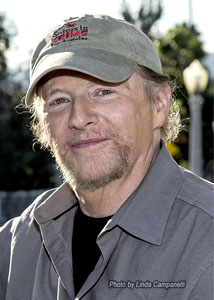
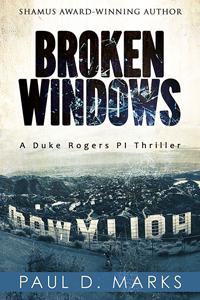
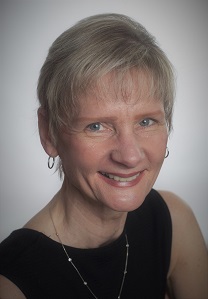
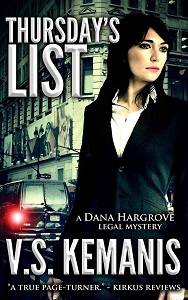
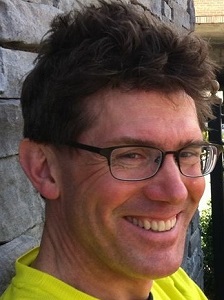
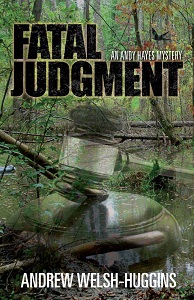
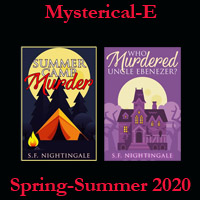
Since this was delayed, David’s book IS out. https://www.amazon.com/They-Tell-Cunning-Duncan-Cochrane/dp/1622536150